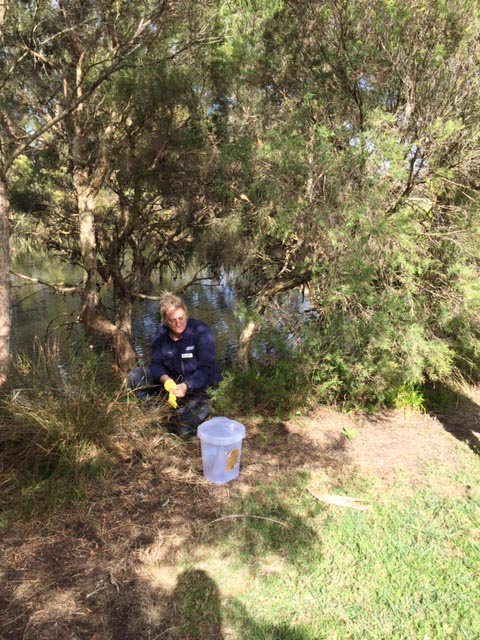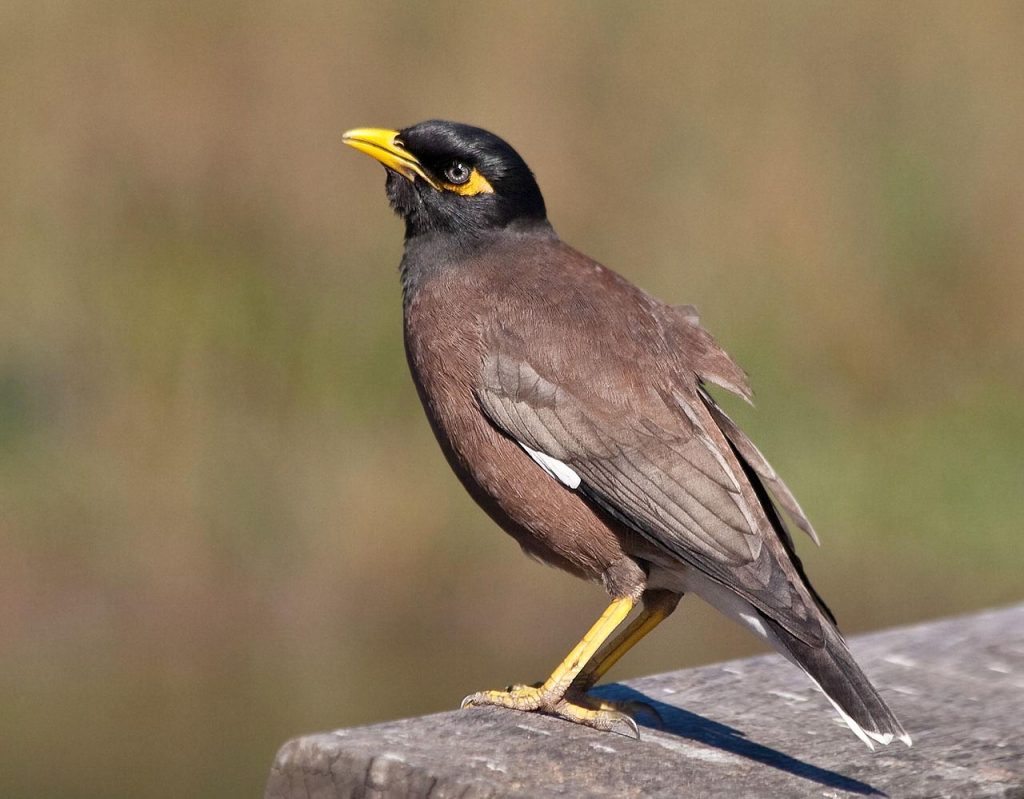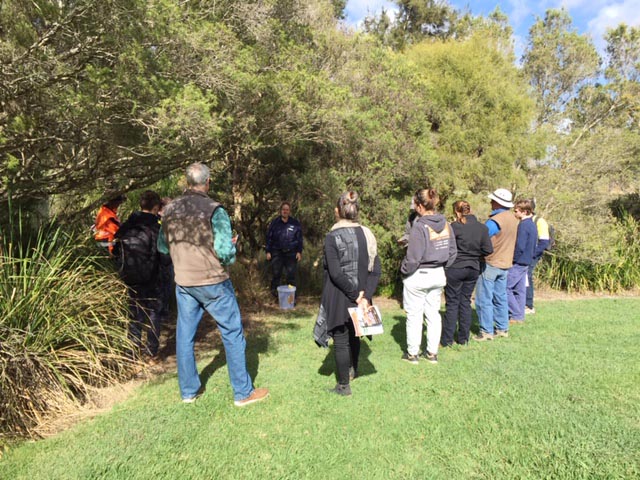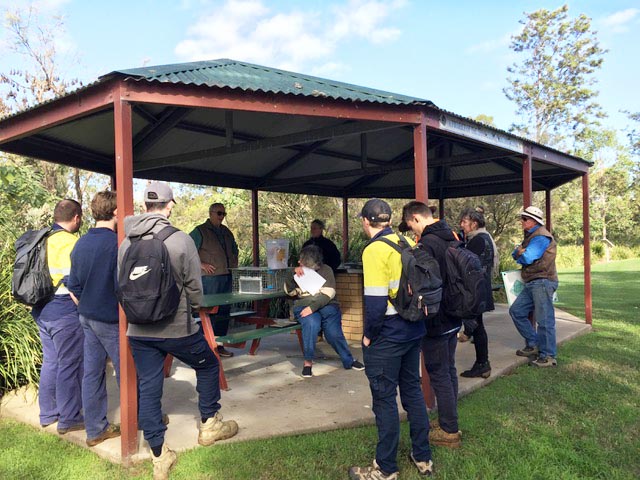Beaudesert Landcare And Scenic Rim Partner In A Workshop About Invasive Pest Species In Our Region And What We Can Do To Help
On the first Friday in July, Beaudesert Landcare partnered with the Scenic Rim Council Officers and held an Information Workshop in Lions Park in Beaudesert. The participants were provided with information and practical demonstrations related to Cane Toad Tadpole Lures, Indian Myna Traps, and Fire Ants and Their Habitat. We were joined by Catherine Madden – Senior Biodiversity Officer and Edwina Sivell – Senior Biosecurity Officer.
Catherine Madden discussed the Cane Toad Tadpole Lures and provided a demonstration of the Tadpole trap – ideal for capture in your creek or dam or pond. Cane Toads are prolific breeders and each female can produce 35,000 eggs each times she reproduces. By simply setting up a trap and returning a few hours later you can remove hundreds of Cane Toad tadpoles. The lures are Australian made and originally developed by the University of Queensland. Further info: mail@scenicrim.qld.gov.au or visit landcarebeaudesert.com.au.


Beaudesert Landcare will be providing opportunities for private landholders to have a Cane Toad Tadpole Lure on loan – information will follow next month.
Leo Goggins, from Beaudesert Landcare, discussed Indian Myna birds, an introduced pest whose presence in ever-increasing numbers is threatening native birds and hollow-dwelling animals in the Scenic Rim region. They are an invasive species, opportunistic and eat almost anything. Indian Mynas were listed as one of only three birds among “100 of the World’s Worst Invasive Species”. They are very messy birds, evicting animals and birds from nests, attacking chicks and breeding in tree hollows rendering them unusable by other wildlife. These birds breed quickly and can raise multiple clutches each year, with up to 5 chicks per clutch.

Beaudesert Landcare has a campaign, financing the Beaudesert Men’s shed to make cages to distribute throughout the community. You can help you capture these PESTS.
If you would like to be involved and have a cage trap, contact Beaudesert Landcare on 0439 957 758 or via our webpage – www.landcarebeaudesert.com.au.
Edwina Sivell outlined the shared responsibility we all have for invasive weeds, or invasive animals and Fire Ants. Working together is essential. Human assisted movement is the greatest risk when it comes to spreading fire ants – if you are moving carriers of fire ants (eg soil, mulch, hay etc) check that you are using safe practices, and report all or suspected sightings – a legal obligation under the Biosecurity Act of 2014 – call Department of Agriculture and Fisheries on 132 523.
Key message: Inspect, Report, Treat if you are able.
Any questions: mail@scenicrim.qld.gov.au
We hope to provide more information workshops in the future, contact Beaudesert Landcare with your ideas or needs.
By Maryann Goggins (Beaudesert Landcare)
